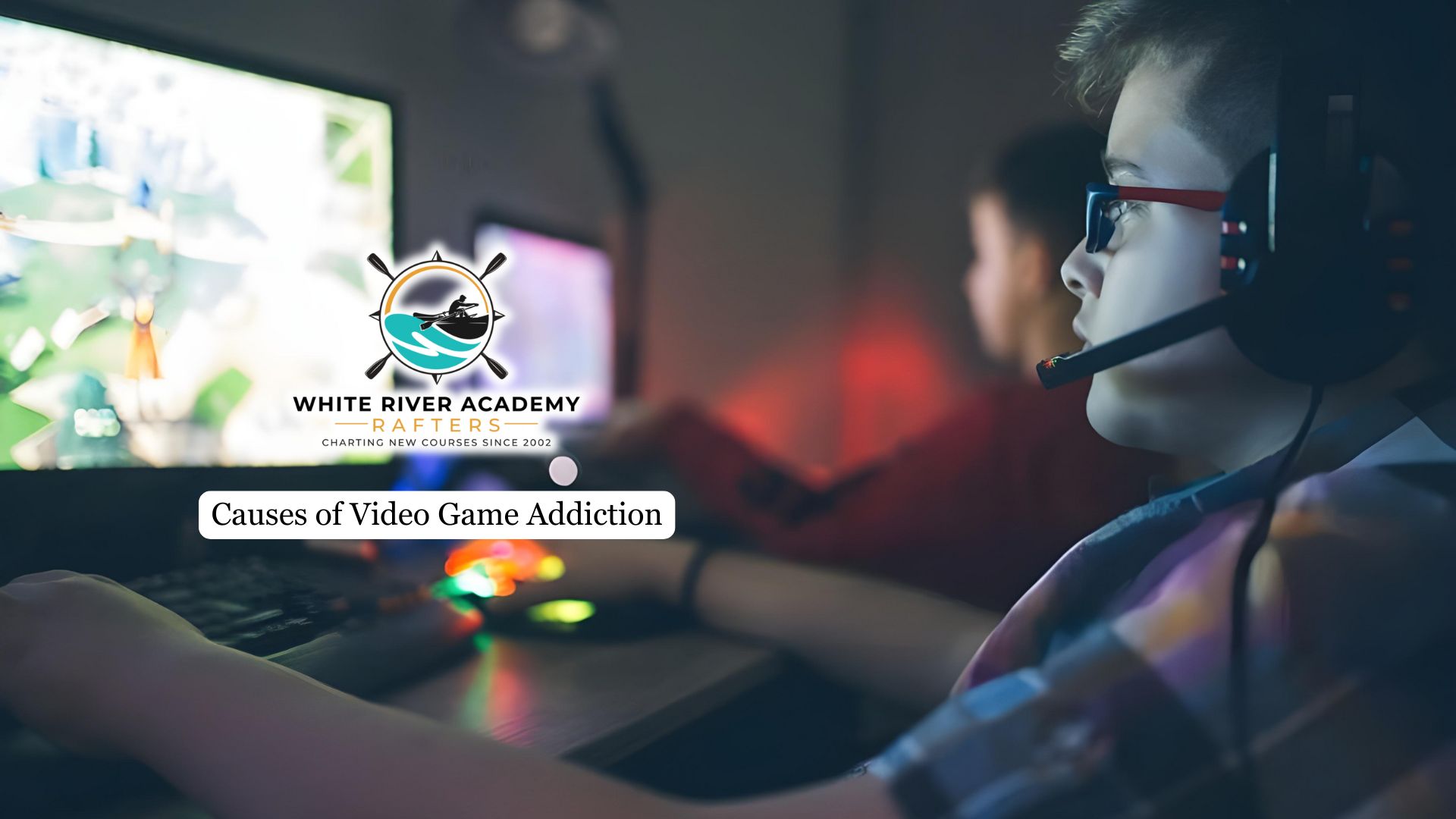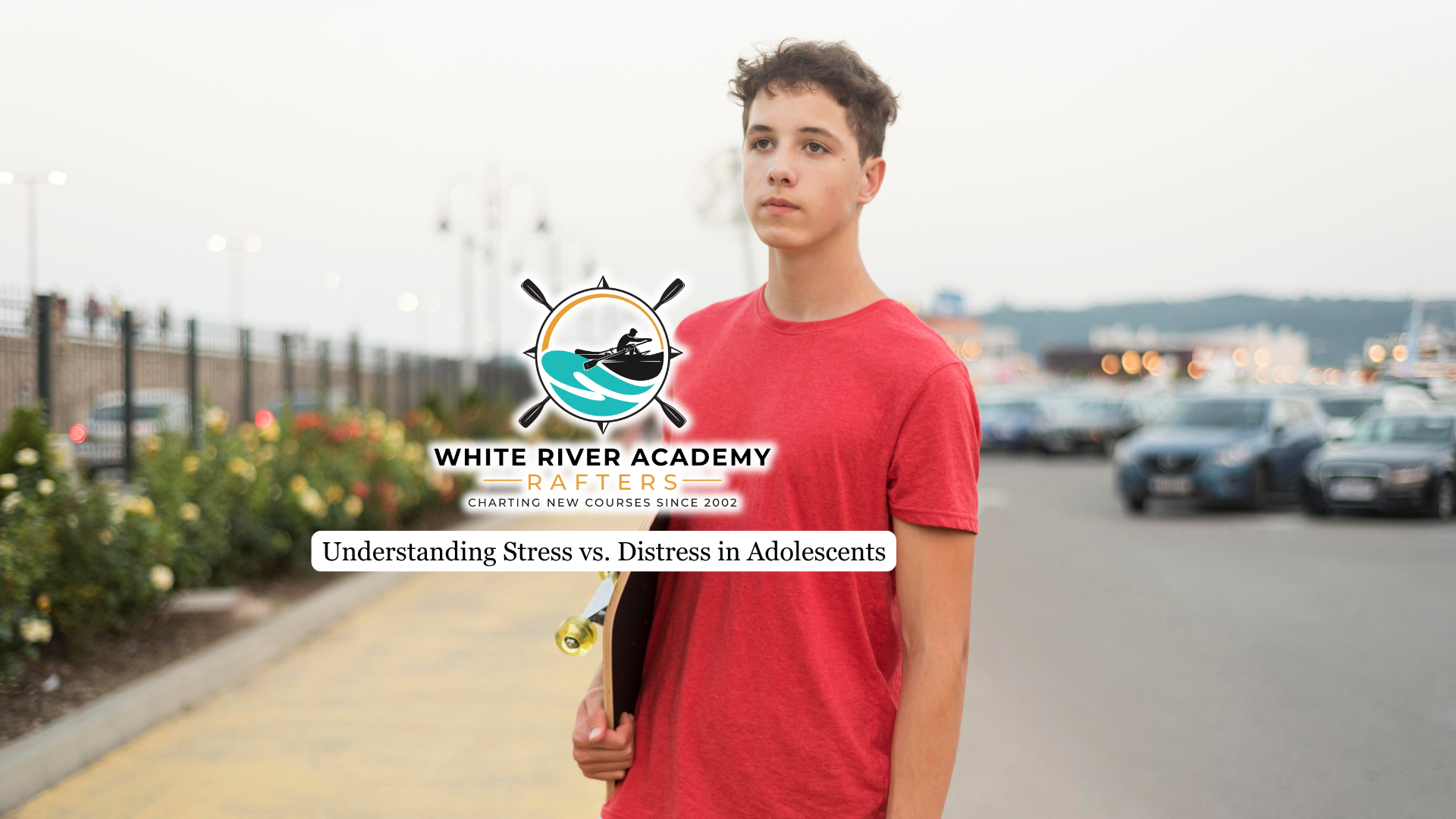Video game addiction, now recognized as “gaming disorder” by the World Health Organization (WHO), is a behavioral condition where compulsive gaming takes precedence over other life activities, despite negative consequences. Understanding what drives this addiction is essential for prevention, early intervention, and effective treatment.
In this article, you will learn the different factors that cause gaming addiction—and how recognizing these things can guide healthier habits and successful recovery for your teenage boy.
What Is Video Game Addiction?
Video game addiction is defined as a persistent pattern of gaming behavior that leads to significant impairment in personal, social, educational, or occupational functioning. The WHO’s International Classification of Diseases (ICD-11) includes gaming disorder as a diagnosable condition, affecting an estimated 3-4% of gamers worldwide.
Some teen game addiction signs include:
- Loss of control over gaming behavior and frequency
- Prioritizing gaming over daily responsibilities and other interests
- Continuing to game despite harmful consequences to health, academics, or relationships
- Withdrawal symptoms, such as irritability, anxiety, or restlessness when not playing
- Functional impairment that lasts at least 12 months and disrupts normal life activities
At White River Academy, our specialized gaming addiction treatment in UT is designed to address the unique challenges faced by adolescent boys struggling with excessive gaming.
6 Causes of Gaming Addiction
Gaming addiction doesn’t develop overnight – it’s often the result of multiple psychological, biological, and environmental factors working together. Understanding these causes can help identify risks and guide early intervention.
Brain Chemistry and the Reward System
At the core of video gaming addiction is the way games interact with the brain’s reward pathways. Playing video games triggers the release of dopamine – a neurotransmitter associated with pleasure and reinforcement – especially during moments of achievement, winning, or meaningful social interaction within the game.
This repeated stimulation creates a powerful reinforcement loop, similar to what occurs in substance use disorders, training the brain to crave the excitement and satisfaction that gaming provides. Over time, the brain may become less responsive to other forms of reward, making gaming the primary source of pleasure and leading to compulsive play.
Social Connection and Online Communities
Modern games, especially multiplayer and online titles, offer a strong sense of belonging and identity. For individuals who feel isolated or struggle with real-world relationships, virtual communities can become a primary source of social validation and friendship.
The instant feedback, status recognition, and camaraderie found in these online spaces can make disengagement difficult, as leaving the game may mean losing important social connections. This dynamic can reinforce excessive play and further entrench gaming as a central part of daily life.

Mental Health Challenges
Many people who develop gaming addiction have underlying mental health conditions such as anxiety, depression, ADHD, or low self-esteem. Gaming often serves as a coping mechanism, providing an escape from overwhelming emotions, stress, or a lack of control in daily life.
The immersive nature of games can temporarily relieve negative feelings, but over time, reliance on gaming for emotional regulation may worsen mental health and reinforce the cycle of addiction.
Genetic and Biological Vulnerabilities
Genetic factors also play a role in susceptibility to gaming addiction. Individuals with a family history of addiction or certain neurobiological traits may be more prone to developing compulsive gaming behaviors.
Differences in brain structure or function, such as altered dopamine signaling or impaired impulse control, can increase vulnerability and make it harder to regulate gaming habits.
Environmental Stressors and Family Dynamics
External factors, including unstable home environments, poor parental supervision, high academic or social pressure, and emotional neglect, can drive individuals – especially adolescents – to seek refuge in gaming.
For some, games become a way to escape real-life problems or to cope with stress and disappointment. Over time, this reliance on gaming as a coping strategy can reinforce social withdrawal and contribute to the development of addictive behaviors.
Lack of Structure and Limits
A lack of clear boundaries or rules regarding screen time is a significant risk factor for gaming addiction. Adolescents and young adults with excessive unstructured time are particularly vulnerable, as gaming can easily fill emotional and mental voids. Without consistent limits or alternative activities, gaming may gradually displace other important aspects of life, such as academics, hobbies, and real-world relationships.
Effects of Video Game Addiction
Video game addiction can have far-reaching consequences:
- Physical health: Increased risk of obesity, musculoskeletal problems, and digital eye strain due to prolonged sedentary behavior.
- Mental health: Higher rates of depression, anxiety, aggression, and social withdrawal.
- Academic and occupational impact: Declining grades, poor job performance, and neglect of responsibilities.
- Social consequences: Strained relationships, family conflicts, and increased isolation.
Prevention and Intervention Strategies
- Establish clear screen time limits and routines.
- Encourage alternative activities and social engagement offline.
- Address underlying mental health issues through counseling or therapy.
- Promote parental involvement and supervision, especially for adolescents.
- Seek professional help if warning signs persist or escalate.
Hobbies To Replace Video Games
If your teen boy is spending too much time gaming, introducing new hobbies can help him reconnect with the real world and build healthier habits. Outdoor activities like hiking, biking, or jogging boost physical health and reduce screen time. Creative outlets such as drawing, painting, or playing music encourage expression and relaxation, while reading sharpens focus and imagination.
Sports and physical activities promote discipline, teamwork, and fitness. Cooking or baking teaches practical life skills and can be a fun bonding experience. For emotional balance, practices like yoga, meditation, or journaling help manage stress and build self-awareness.
Volunteering, gardening, or DIY projects offer hands-on engagement and a sense of purpose. Even simple activities like board games, photography, or learning a new skill can replace screen time with personal growth. Encouraging these interests can lead to a more balanced and fulfilling lifestyle for your teen.
Final Thoughts from White River Academy
Video game addiction is a serious behavioral issue influenced by psychological, neurological, and environmental factors. Recognizing the warning signs early is key to preventing long-term harm. When gaming starts interfering with daily responsibilities or relationships, it’s time to seek support and set healthy boundaries.
At White River Academy, we offer a holistic, teen-focused treatment program that includes outdoor activities, equine therapy, physical fitness, and creative outlets – guiding adolescent boys toward new passions beyond the screen. If you’re concerned about your teen’s gaming behavior, our specialized video game addiction program can help them restore balance and build a more fulfilling life.




